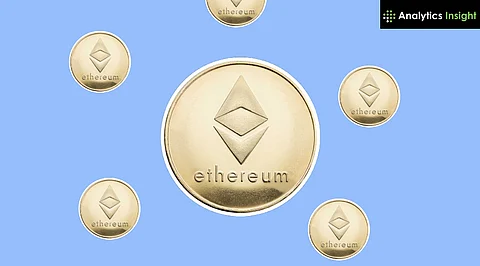

.eth domains simplify crypto transactions and act as universal Web3 logins.
They are fully owned NFTs, giving users control and censorship resistance.
Investors and users alike are snapping up premium .eth names as digital assets.
Domain names are no longer just web addresses in the evolving world of Web3; they are digital identities, blockchain-linked wallets, and tokenized assets. One type of domain at the center of this transformation is the .eth domain, governed by the Ethereum Name Service (ENS). These blockchain-based domains are reshaping how users interact with crypto and decentralized apps, offering an elegant solution to many long-standing issues in digital identity and asset management.
.eth domains are decentralized domain names registered on the Ethereum blockchain via ENS. Unlike traditional domain names controlled by centralized registrars (like .com or .net), .eth domains are stored as non-fungible tokens (NFTs) in your Ethereum wallet. This means you have full ownership, control, and portability.
Each .eth domain can be linked to wallet addresses, smart contracts, and decentralized websites. Instead of copying a complex hexadecimal Ethereum address (e.g., 0x93AF...98D4), users can simply send funds to an easy-to-remember name, such as alice.eth.
Also Read: Ethereum Price Holds Above Key Support as Bulls Eye Breakout
The demand for .eth domains has seen a significant rise, with over 2.1 million names registered on ENS as of mid-2025.
Here's why interest in them continues to climb:
An .eth name serves as a human-readable alias for cryptocurrency wallets. This drastically reduces errors during transactions and streamlines the user experience across crypto platforms.
Just as social media handles define presence on the web2 internet, .eth domains serve as unique identifiers in the decentralized web. Influencers, NFT creators, and developers are using their .eth names as branding tools for their online personas.
.eth domains are held as NFTs in user wallets, ensuring full autonomy. Unlike traditional domains, no central authority can revoke or censor them.
Many .eth domains have become valuable digital assets. Names like “vitalik.eth” or single-word domains have sold for tens of thousands of dollars, with a thriving secondary market on platforms like OpenSea.
.eth domains aren’t just for show. They have practical, everyday use cases that are expanding as the Web3 ecosystem matures:
ENS domains enable linking multiple wallets (ETH, BTC, LTC, etc.) to a single .eth name. This simplifies the process of sending and receiving various cryptocurrencies.
Many dApps now offer ENS login, enabling users to sign in with their .eth domain instead of creating new credentials. This streamlines user experiences across decentralized platforms.
Using IPFS (InterPlanetary File System), users can host websites that are censorship-resistant and linked directly to their .eth domain. Perfect for DAOs, activist groups, or decentralized brands.
Emerging Web3 protocols are integrating messaging features that work through ENS. This will soon allow for email and messaging to ENS addresses in a privacy-preserving, decentralized way.
As Web3 adoption accelerates, .eth domains will likely become as essential as email addresses were during the rise of Web2. With growing support from major platforms and ongoing development in decentralized protocols, these domains offer a forward-looking blend of identity, utility, and asset potential.
For investors, early adopters, and builders in the space, owning a .eth domain is more than a novelty; it’s a strategic move in an increasingly digital and decentralized economy.
.eth domains offer simplicity, sovereignty, and value in a decentralized world. Whether you’re securing your digital identity, investing in Web3 real estate, or simply looking to streamline your crypto transactions, there’s never been a better time to explore what ENS has to offer.
Also Read: Ethereum ETFs Defy Price Drop with Record-Breaking Inflow Streak
